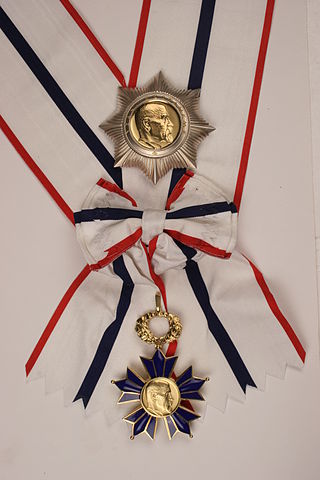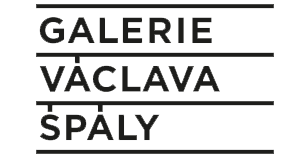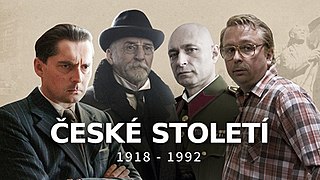This is a list of Czech painters. According to Czech Radio, the most famous Czech painters are Václav Brožík, Josef Čapek, František Kupka, Josef Lada, Josef Mánes, Alphonse Mucha, Jakub Schikaneder, Antonín Slavíček, Toyen and Jan Zrzavý. [1]

The Czechs, or the Czech people, are a West Slavic ethnic group and a nation native to the Czech Republic in Central Europe, who share a common ancestry, culture, history, and the Czech language.

Czech cinema is the name for cinematography of Czech Republic, as well as the Czech cinematography while it was a part of other countries.
The Manifesto of Czech writers was the first public declaration in favour of the self-determination of the Czech nation during the First World War. It was published in May 1917. The declaration was directed at the Czech deputies at the Imperial Council in Vienna, the Parliament of the Austrian parts of the Austro-Hungarian Empire.

The Prague Conservatory is a public music school in Prague, Czech Republic, founded in 1808. Currently, the school offers four- or six-year courses, which can be compared to the level of a high school diploma in other countries. Graduates can continue their training by enrolling in an institution that offers undergraduate education.

The Order of Tomáš Garrigue Masaryk is an Order of the Czech Republic and the former Czechoslovakia. It was established in 1990 after the Velvet Revolution, and re-established in 1994. The President of the Czech Republic awards it to individuals who have made outstanding contributions to the development of democracy, humanity and human rights. Unlike in the past, it is awarded to the Czech citizens and foreigners alike. The order has five classes, of which class I is the highest. The order is named in honor of Tomáš Garrigue Masaryk, an advocate of Czechoslovak independence and the first President of Czechoslovakia.
Lucerna is a Czech fairy-tale play based on a theme of writer Alois Jirásek. The stage play Lucerna, in four acts, was written by Alois Jirásek in 1905. It premiered on 17 November 1905 in National Theatre in Prague. The play was a best-seller.
The Milan Rastislav Stefanik Order is an award given "to recognize eminent contributions to the defence and security of the Czech and Slovak Federative Republic". It was bestowed by the President of the Czech and Slovak Federative Republic. The award is named after Milan Rastislav Stefanik.

The Academy of Arts, Architecture and Design in Prague is a public university located in Prague, Czech Republic. The university offers the study disciplines of painting, illustration and graphics, fashion design, product design, graphic design, ceramics and porcelain, photography and architecture.
List of selected composers born or trained in the Czech lands. The periods need to be taken with some reserve, because some composers, for example Jan Ladislav Dussek, composed music that was way ahead of their time and for example Antonín Dvořák himself was a romantic-classicist synthesist, so he does not have a perfect place in the list.
Obrana národa was a Czech resistance organization that fought against the German occupation from 1939 to 1945. It opposed Nazi rule in the Protectorate of Bohemia and Moravia. The group was founded by General Josef Bílý in April 1939.
The National Labour Party was one of two identically named parties in Czechoslovakia. It was founded on 11 December 1938 as a merger of the Czechoslovak Social Democratic Party with the left wing of the Czechoslovak National Social Party. The purpose of the party was to unify the non-communist left and, within the framework of the Second Czechoslovak Republic, to function as a democratic opposition against the authoritarian tendencies of the Party of National Unity, which constituted the government. An identically named party had previously existed in Czechoslovakia from 1925 to 1930.

The Václav Špála Gallery is a Prague gallery of mostly contemporary art. It is located at no. 59/30 Národní třída, in the New Town of Prague. The gallery holds exhibitions particularly of works by living Czech professional artists of the middle generation who are among the best painters, photographers, and sculptors on the art scene today. The exhibitions regularly alternate between works of painting, photography, and sculpture.

Czech Century (Czech: České století, is a Czech historical television series. It deals with the background of important historical events in Czech history since World War I to Dissolution of Czechoslovakia. According to the creators, it is not a pure documentary series, but rather a film series "exposing the taboo of key events of our modern history". In particular, the series studies the psychology and mental motivations of individual actors of historical events in the moments when these personalities "had a knife to their throats" and were aware that their decision would affect not only their loved ones, but the entire nation for many years to come. The authors deliberately do not evaluate whether the persons in question behaved right or wrong from a historical point of view.